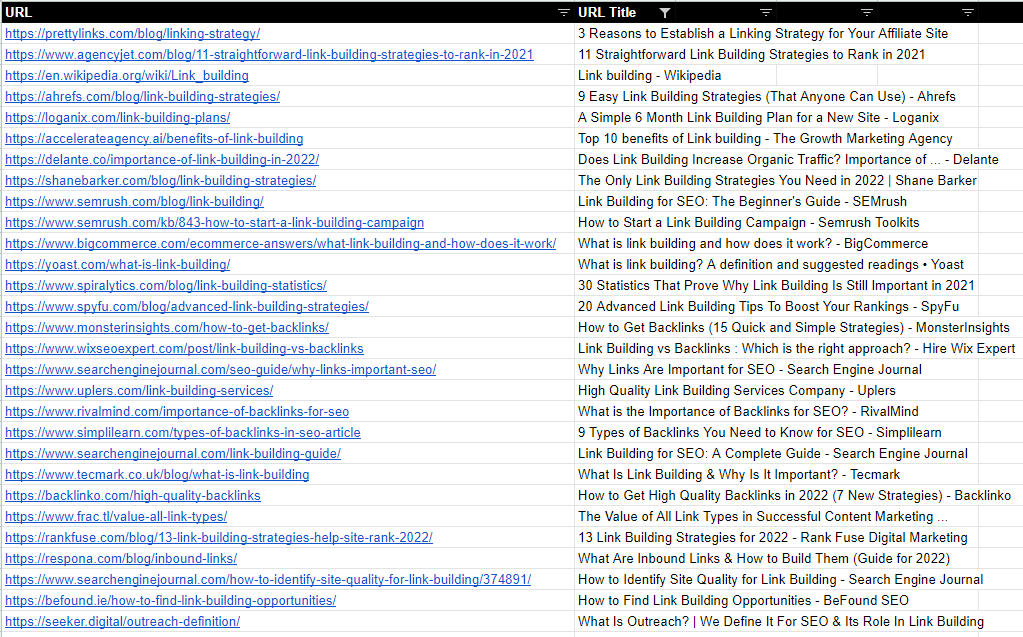How to Generate Numerous Blog Ideas from a Single Keyword

Title: Unveiling an Innovative Approach for Abundant Blog Ideas from a Single Keyword
Introduction:
Are you wondering how to unearth fresh and distinctive blog topics without resorting to conventional keyword research tools? In this article, we will explore a groundbreaking strategy that empowers you to derive hundreds of unique topic ideas from a single keyword. Unlike traditional methods, this approach allows your website to rank easily and gain traffic. We’ll walk you through each step, simplifying the process with tools and formulas, making it accessible even to those new to the field.
The Pitfalls of Keyword Research Tools:
Before delving into the strategy, it’s essential to understand the limitations of relying solely on keyword research tools. These tools often lead to the creation of generic blog posts that are saturated by high authority sites. Attempting to rank for these keywords can be futile unless you possess an exceptionally influential website. The solution lies in adopting a more targeted and granular approach to content ideation.
The Strategy: PAA Mining (People Also Asked):
The PAA mining technique, also known as “People Also Asked,” is an effective approach for generating a multitude of content ideas. Here’s a step-by-step breakdown of how it works:
Step 0: Acquire the SEO Minion Chrome Extension:
To begin, you’ll need the SEO Minion Chrome extension, a valuable tool that streamlines the process of scraping FAQs from search results. Download and install it to save you significant time.
READ THIS: How to Generate an Effective Seed Keyword List for Improved SEO
Step 1: Choose a Keyword and Download PAAs:
Select a keyword of interest, for instance, “link building strategies,” and enter it into Google. Then, use the SEO Minion extension to download the People Also Asked (PAA) results related to your keyword.

Step 2: Organize and Clean the Data:
After downloading the PAA data, you’ll have a spreadsheet filled with valuable information. To make it more manageable, create two new tabs to separate the URLs and PAAs. This step ensures clarity and reduces duplication.

Step 3: Eliminate Duplicate Entries:
To maintain data integrity, remove duplicate URLs and PAAs from both tabs.
Step 4: Implement Ninja Formula 1:
In the “URLs” tab, perform a VLOOKUP formula to retrieve the URL title associated with each URL. This step helps organize your data effectively.

Step 5: Implement Ninja Formula 2:
In the “URLs” tab, use a transpose and filter formula to extract the PAAs that correspond to the URLs. This formula prevents duplication of URLs and PAAs.

Step 6: Filter Out Irrelevant Queries:
Filter the URL titles to eliminate any entries unrelated to your main topic. For instance, if your focus is on “link building,” filter out entries that don’t contain the keyword “link.”
Step 7: Analysis and Content Planning:
Now that you have a refined list of URLs and their associated PAAs, it’s time to plan your content strategy. Consider factors like the domain rating of competing pages and the relevance of the URL title to the PAA. These insights will help you shortlist content topics.
Step 8: Address PAAs:
For each selected topic, make sure to address the PAAs associated with the competing pages. Providing comprehensive answers to these questions ensures your content covers everything readers are seeking.
READ THIS: How to Create a Compact Web Application for Streamlining SEO Operations
Conclusion:
By following this method, you can effortlessly generate a wealth of content ideas in a matter of minutes while using just one keyword. Once you become familiar with the formulas and tools, this approach becomes exceptionally straightforward and highly effective for expanding your blog’s reach.
FAQs:
1. What are the limitations of relying on keyword research tools for blog topic ideation?
- Keyword research tools can lead to the creation of generic blog posts already covered by authoritative sites, making it challenging to rank unless your website is highly influential.
2. What is the PAA mining strategy, and why is it effective for generating blog topics?
- PAA mining, or People Also Asked mining, is a technique that extracts numerous content ideas from a single keyword. It’s effective because it allows for unique content creation and helps build topical authority.
3. How can I use the SEO Minion Chrome extension to streamline the process of content ideation?
- You can use the SEO Minion Chrome extension to scrape FAQs from search results, making it a valuable tool for collecting PAA data quickly and efficiently.
4. What steps are involved in the PAA mining strategy, and how can I clean and organize the data for better analysis?
- The PAA mining strategy involves steps such as downloading PAAs, cleaning the data, eliminating duplicates, and using formulas to organize and extract relevant information from the data.
5. How does addressing PAAs associated with competing pages contribute to the success of your content strategy?
- Addressing PAAs ensures that your content covers the questions readers are asking, making your content more informative and likely to rank well for related searches.


